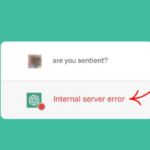Meta, the parent company of Facebook and Instagram, recently published a detailed analysis of its social media algorithms. Their intention was to elucidate the methodology behind content recommendations. In a recent blog post, Nick Clegg, Meta’s President of Global Affairs, highlighted the company’s dedication to transparency and accountability. He did it by offering comprehensive insights into the AI systems that power its algorithms. Clegg also provided actionable suggestions for Facebook and Instagram users to amplify their ability to manage the content they come across on the platforms.
A significant portion of the information appears in 22 “system cards.” It encompasses various aspects such as the Feed, Stories, Reels, and other methods utilized by individuals to explore and consume content on Meta’s social media platforms. These cards offer comprehensive insights in an easily understandable manner regarding the ranking and recommendation mechanisms employed by the AI systems supporting these features.
How Does the AI Recommendation Engine Works?
The process begins with Inventory Gathering. Here, the system collects publicly available Instagram content such as photos and reels that adhere to the company’s guidelines. Next, the Signals are leveraged. This refers to the AI system taking into account user engagement with similar content or interests. This is also popular as “input signals.” Finally, the Content is ranked based on the outcomes of the previous steps. Note that the system prioritizes and positions content that it predicts will be more appealing to the user.
According to the card, Instagram users can influence this process in several ways. They can save content to indicate their preference for similar content. Additionally, they can mark it as “not interested.” It will signal to the system that they would like to avoid similar content in the future. Users also have the option to explore reels and photos that are not specifically for them. They can do that by choosing the “Not personalized” option in the Explore filter. For more detailed information about Meta’s predictive AI models, the input signals utilized to guide them, and the frequency of their usage in content ranking, users can refer to Meta’s Transparency Center.
New Features Explain Why You Are Seeing Specific Content
In addition to the system cards, there are various features on Instagram and Facebook that can provide users with insights into why they are seeing specific content and how they can customize their recommendations.
This enhancement will enable users to click on individual reels and understand how their previous activity may have influenced the system to display that particular content. Moreover, Instagram is currently testing a new Reels feature that allows users to mark recommended reels as “Interested.” It will help them to receive similar content in the future.
Since 2021, users have had the option to mark content as “Not Interested.” Meta has further revealed its plan to introduce the Content Library and API soon. It’s a collection of research tools. This resource will encompass a wide range of public data from Instagram and Facebook. You can get access to these tools through approved partners. Note that the University of Michigan’s Inter-university Consortium for Political and Social Research is the initial partner for accepting applications.
Final Words
According to Meta, the new tools aim to offer the most extensive access to publicly available content from Facebook and Instagram compared to any previous research tool developed by the company. These tools aid Meta in fulfilling its data-sharing and transparency compliance obligations. Additionally, they are also a significant driving force behind the company’s decision to provide clearer explanations regarding the utilization of AI in shaping the content we view and engage with.
The rapid advancement of AI technology and its increasing prominence in recent times have garnered significant attention from regulators globally. While Meta’s algorithms have been in existence for some time, past instances of mishandling user data during the Cambridge Analytica scandal, as well as the public response to TikTok’s limited transparency measures, likely serve as reminders to prioritize clear and extensive communication efforts.








